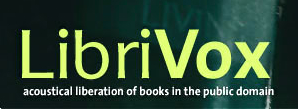

In my last blog entry, I wrote about the necessity of envisioning success in voice-over and creating a road map to reach your desired destination. Since it’s natural to look toward the future as we change to a new year, I thought you might appreciate 3 ideas that may help you draw your map.
You’ve already decided on a career in voice-over, but do you know how your voice fits in the industry? Many voice talent try to be all things to all people and end up frustrated by endlessly attending classes, creating new demos, and marketing to potential clients without first thinking of how every action should tie together and lead one closer to one’s goals.
You see, I know something about such frustration. Oh, sure, I’m radiating inner peace now (well, most days, anyway!), but I have a journal entry from 1 June 2003 in which I wrote:
Today’s word is frustrated. I looked in the dictionary and found the word describes ME.
I even modified the dictionary entry to include my picture and my name in the description. If you can’t read the highlighted portion, it says:
1 a: to balk or defeat in an endeavor b: to induce feelings of discouragement in Karen Commins
My voice-over career was the number 1 reason for my frustration that day. I wrote:
I could do so many things to further my voice-over career…I have so many good ideas for marketing and promotion — so many things I want/need to do, should/could do — but not enough time. I know I could book more gigs if I could….
You get the drift.
So what changed?


After writing about my frustration, I next wrote:
I re-read Barbara Sher’s book I Could Do Anything If I Only Knew What it Was and saw her line that frustration should lead to action.
Which brings me back to my point today.
We’re all unique. No one else sees the world the way you do, and no one has your exact same vocal characteristics. Your experiences and thoughts will influence your script interpretations. The question for us then becomes one of marketing that unique voice and style to voice-over clients. Rather than being all things to all people — saying you’ll record everything from promos to phone prompts — I think it’s important to concentrate your efforts into some carefully-chosen specialty areas appropriate for your voice, interests, and personality.
I have mentioned previously that I keep many journals, including one for plans and ideas for my voice-over career. On 31 December 2003 (just 6 months after the entry about frustration), I started a New Year’s Eve journal. The idea is to write in it only the one time as a blueprint for the coming year. I am looking forward to writing it in later today.
I was very harsh on myself in 2003, 2004 and 2005; I labeled myself a failure for not accomplishing the many goals I had written the previous year. However, the entry for 2005 was a turning point because I developed a mission statement.
If you’ve spent any time in corporate America, you’ve probably seen a mission statement hung on a prominent office wall in a cheap $1.29 metal frame. I always rolled my eyes when reading these statements — that is, if the statement didn’t put me to sleep. They always seem to use “suit speak”, with words like leveraging our human resources to transform the cost structure of our stakeholder-facing enterprises. (Translation: We’ll utilize our employees’ skills to lower costs across the business.)
It’s like they used a MadLibs book to fill it out — you know where someone asks for a noun, an action verb and an adjective and then inserts them into the pre-printed sentence structure to create a nonsensical but highly amusing sentence. While still nonsensical, typical mission statements are anything but amusing. How is a worker supposed to know what to do on a daily basis in order to further the organization’s objectives when the words used to describe those objectives are meaningless?
However, I changed my mind about the usefulness of a mission statement when I created one for my voice-over business. On this day 3 years ago, I used the free on-line process offered by Nightingale-Conant. It prompts you to enter information about your unique characteristics and goals; you may need some time to really think about your answers.
Developing my mission statement gave me a clear starting point on my road map. On any journey, you need to get good directions. In maintaining a successful voice-over business, it’s vital that you research the industry and keep informed about trends.
In the Information Age, we have no shortage of ways to learn about voice-over trends, from blogs to podcasts to conventions. I received 2 e-mails yesterday that offer tidy summaries of the current industry status.
First, David Ciccarelli, one of the founders of Voices.com, sent me a message to let me know he has researched trends for voice-over in the coming year and published his findings in a free report. This report offers some extensive statistics about the demand and growth potential for various types of voice-over work, as well as demographics concerning the audiences and purchasers of voice talent. It would be very helpful to study this report when developing or updating your marketing plan.
The other message was from one of my teachers, the always insightful and entertaining Pat Fraley. Whenever I receive the same message from 2 sources who did not collaborate with each other, I know it is a road sign from the Universe to PAY ATTENTION! Pat sent a link to his latest free .MP3 lesson titled “A Bumper Crop”, which in many ways echoes the trends outlined in David’s report. In these days where financial bail-outs are the news topics every day, a voice talent might think that opportunities are shrinking. In his usual delightful manner, Pat discusses how companies react in slower economic times and offers direction and hope to voice talent for the coming year.
The final idea for your road map is to create your own work. I have previously written about the benefits of making your own work, especially if you are in between paid gigs. Another road sign that I saw just this week was contained in Bonnie Gillespie’s column The Actors Voice: Social Networking and Acting. The essay is a brilliant analysis of an actor’s (yes, including voice actors) effective use of social networking platforms in establishing and maintaining a professional brand. I highly recommend that you read it and apply her guidelines.
In that article are some links to her previous columns about the power producing your own work and the new business model in the entertainment industry. Bonnie’s final sentences in her current column encourage us all to put our voice out there so that prospective clients can hear us.
So, armed with your mission statement, some solid industry research and your commitment to create your own work, you are well on the way to success as a voice actor in 2009 and beyond!
Future street sign photo: Joe Gough, iStockPhoto


